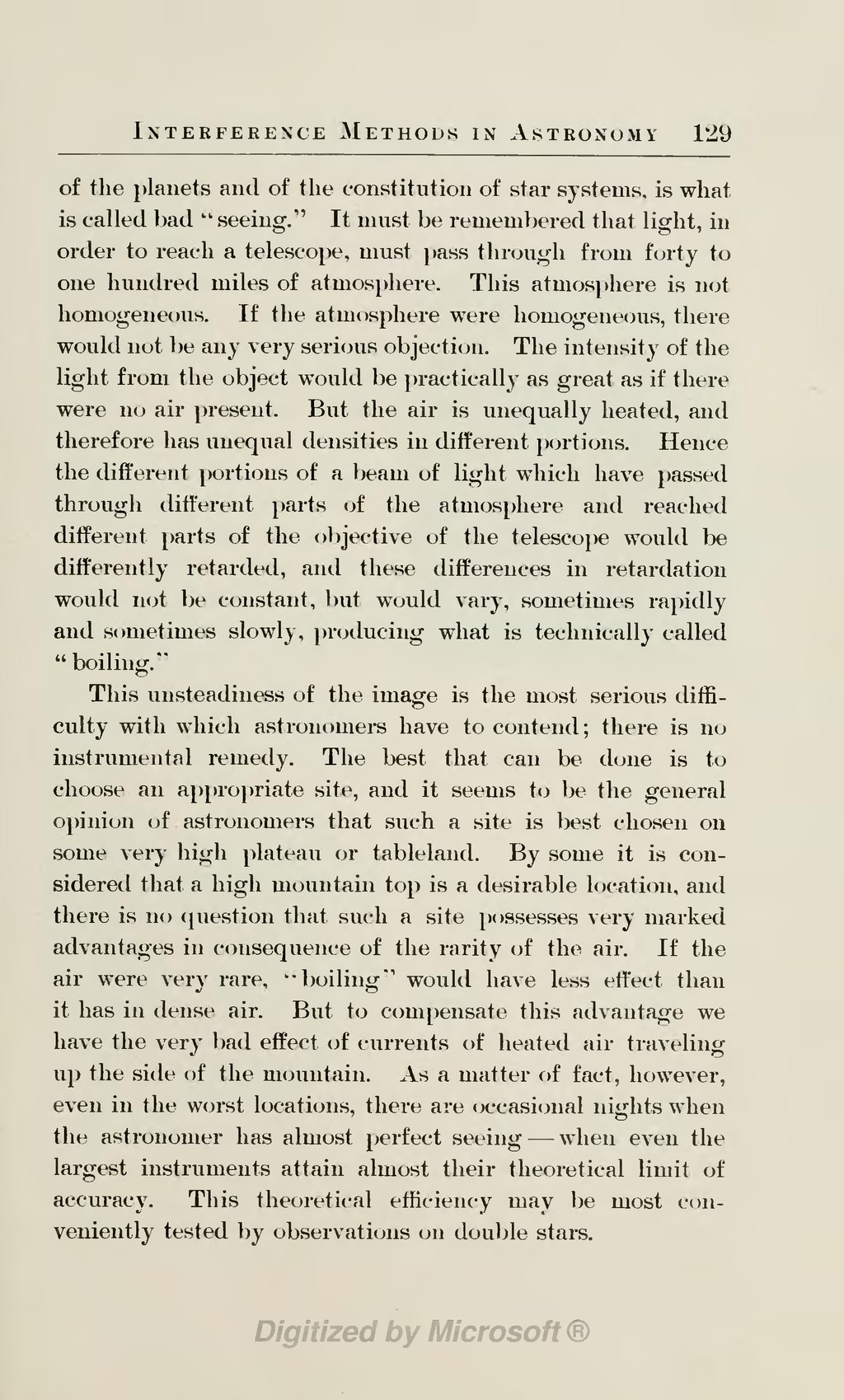of the planets and of the constitution of star systems, is what is called bad "seeing." It must be remembered that light, in order to reach a telescope, must pass through from forty to one hundred miles of atmosphere. This atmosphere is not homogeneous. If the atmosphere were homogeneous, there would not be any very serious objection. The intensity of the light from the object would be practically as great as if there were no air present. But the air is unequally heated, and therefore has unequal densities in different portions. Hence the different portions of a beam of light which have passed through different parts of the atmosphere and reached different parts of the objective of the telescope would be differently retarded, and these differences in retardation would not be constant, but would vary, sometimes rapidly and sometimes slowly, producing what is technically called "boiling."
This unsteadiness of the image is the most serious difficulty with which astronomers have to contend; there is no instrumental remedy. The best that can be done is to choose an appropriate site, and it seems to be the general opinion of astronomers that such a site is best chosen on some very high plateau or tableland. By some it is considered that a high mountain top is a desirable location, and there is no question that such a site possesses very marked advantages in consequence of the rarity of the air. If the air were very rare, "boiling" would have less effect than it has in dense air. But to compensate this advantage we have the very bad effect of currents of heated air traveling up the side of the mountain. As a matter of fact, however, even in the worst locations, there are occasional nights when the astronomer has almost perfect seeing—when even the largest instruments attain almost their theoretical limit of accuracy. This theoretical efficiency may be most conveniently tested by observations on double stars.
